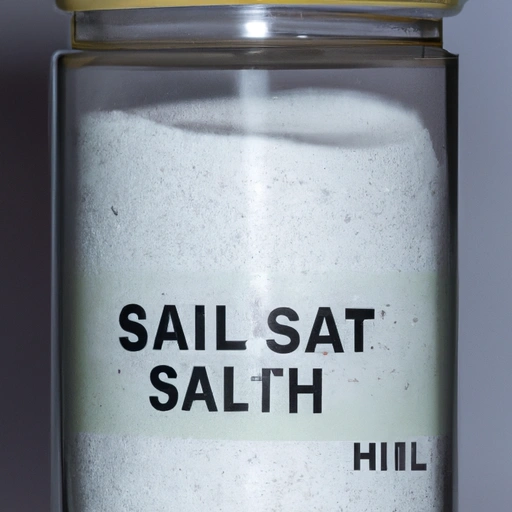Salt Substitute
Description

Salt substitute is a culinary product designed to mimic the flavor of table salt (sodium chloride), but with a reduced sodium content. These alternatives often contain potassium chloride and sometimes additional ingredients such as herbs and spices to enhance the flavor. Salt substitutes can be used in the same manner as regular salt, making them a versatile addition to various recipes for those looking to lower their sodium intake without sacrificing taste.
Common uses
Salt substitutes are commonly used by individuals on low-sodium diets, those with high blood pressure, or anyone looking to reduce their overall salt consumption. They are also a staple in health-conscious cooking and meal planning.
Nutritional value
Calories
Salt substitutes typically contain minimal to no calories.
Protein
There is generally no protein content in salt substitutes.
Fat
Salt substitutes do not contain fats.
Carbohydrates
Most salt substitutes are free of carbohydrates or contain a negligible amount.
Vitamins
While salt substitutes primarily focus on mineral content, some may contain trace amounts of vitamins if enriched with additional ingredients.
Minerals
The main mineral in salt substitutes is potassium, found in the form of potassium chloride. Some products may also contain magnesium, calcium, and other trace minerals.
Health benefits
Using salt substitutes can help reduce the risk of high blood pressure, stroke, and heart disease by lowering overall sodium intake. The presence of potassium in these substitutes can also contribute to better heart health and muscle function.
Potential risks
While beneficial for many, salt substitutes can pose risks for individuals with kidney disease or those taking certain medications. High potassium intake can lead to hyperkalemia, a condition characterized by elevated potassium levels in the blood. It is important to consult a healthcare provider before incorporating salt substitutes into your diet.
Common recipes
Salt substitutes can be used in a wide variety of recipes including soups, stews, sauces, marinades, and seasoning blends. They are also popular in snack seasoning and on cooked vegetables.
Cooking methods
They can be used in any cooking method that typically requires salt, such as boiling, baking, grilling, and sautéing.
Pairing with other ingredients
Salt substitutes pair well with a multitude of ingredients and can be used in a similar fashion to table salt when flavoring dishes.
Summary
A salt substitute is a valuable ingredient for those looking to decrease sodium consumption without losing out on flavor. While it is a healthier alternative for many, individuals with certain health conditions should use caution. With a variety of culinary applications, salt substitutes offer a practical solution for health-conscious cooking worldwide.